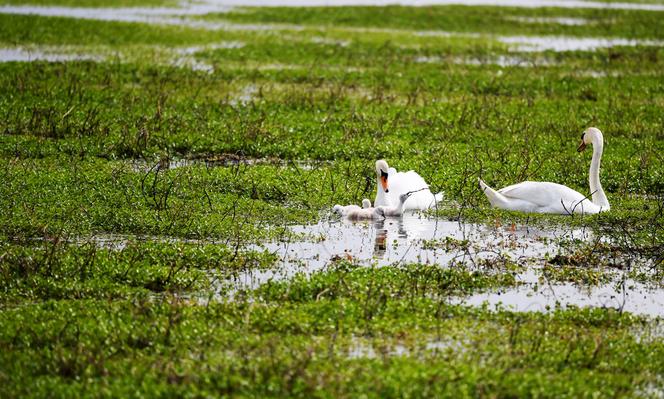


They catch a ride on tires or the hulls of ships and get transported in containers or the holds of aircraft, whether intentionally – such as for pets, aquaculture, or forestry – or unintentionally. At the very least, more than 37,000 species have already been introduced into new regions of the world through human activities.
Only a minority of them (3,500, or around 10%) prove to be "invasive," i.e. become overpopulated and harm their new environment. But their effects are far-reaching: they condemn native species to extinction, drive ecosystems to breaking point, damage the health of local populations, deplete their resources and weigh on the economy. "Invasive alien species are a major threat to biodiversity and can cause irreversible damage to nature [...] and also threaten human wellbeing," said Helen Roy, co-chair of the assessment carried out on the subject by the Intergovernmental Science-Policy Platform on Biodiversity and Ecosystem Services (IPBES), the biodiversity equivalent of the Intergovernmental Panel on Climate Change (IPCC).
Over a span of over four years, a team of 86 researchers from approximately 50 countries analyzed 13,000 scientific studies and indigenous knowledge. Their objective was to summarize the current body of knowledge and put forth recommendations for political decision-makers due to the prevailing perception that the existing response had been deemed "inadequate." The "summary for policymakers," published on Monday, September 4, was unanimously adopted by the 143 IPBES member states at a plenary session in Bonn, Germany.
One of its aims is to raise awareness. Invasive alien species (IAS) are probably the least studied of the five main causes of biodiversity collapse (the other four being land-use change, over-exploitation, pollution and climate disruption). "The severe global threat posed by invasive alien species is underappreciated, underestimated, and often unacknowledged," said IPBES from the outset.
In order to fill these gaps, the researchers have drawn up a comprehensive overview of the situation. First of all, they note that no region of the world is spared by the phenomenon. "These are risks and challenges with global roots but very local impacts, facing people in every country, from all backgrounds and in every community – even Antarctica is being affected," said researcher Anibal Pauchard, one of the co-chairs. Worldwide, water hyacinth, lantana camara (a shrub) and the black rat are the most widespread IAS.


Their impacts, mostly reported in land ecosystems, have also been precisely documented. Once established, an invasive species can alter ecosystem properties (e.g. soil or water characteristics), competition between species, and predation, harming native species. According to IPBES, IAS have played a major role in 60% of known extinctions, and have been the sole cause of 16% of extinctions. The black rat, for example, is solely responsible for the collapse of two other rodent species endemic to the Galapagos Islands. In total, at least 218 IAS have been documented as being responsible for over 1,200 local extinctions. "Some invasive alien species have a profound ecological impact that spans various levels, from individual species and communities to whole ecosystems," said the researchers.
You have 53.66% of this article left to read. The rest is for subscribers only.
